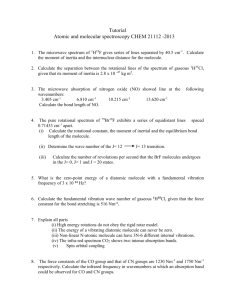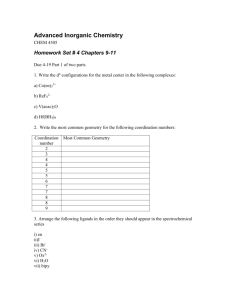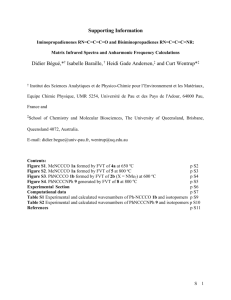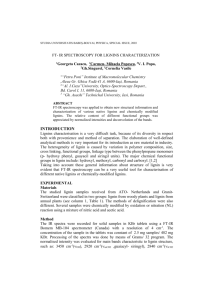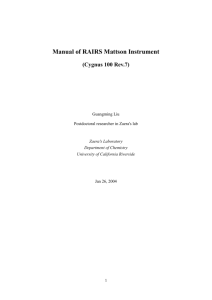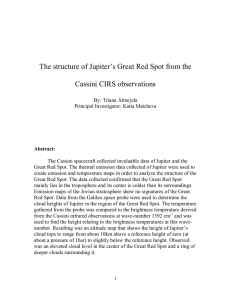NPL_SB10_indiv_notes - Colour & Vision Research laboratory
advertisement
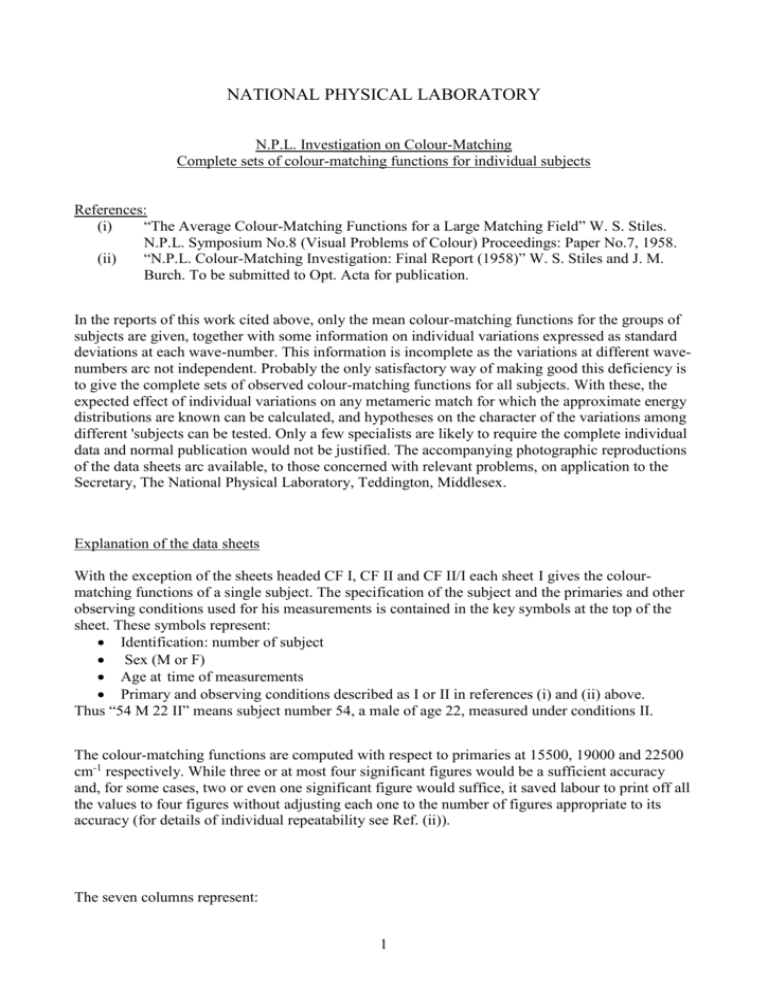
NATIONAL PHYSICAL LABORATORY N.P.L. Investigation on Colour-Matching Complete sets of colour-matching functions for individual subjects References: (i) “The Average Colour-Matching Functions for a Large Matching Field” W. S. Stiles. N.P.L. Symposium No.8 (Visual Problems of Colour) Proceedings: Paper No.7, 1958. (ii) “N.P.L. Colour-Matching Investigation: Final Report (1958)” W. S. Stiles and J. M. Burch. To be submitted to Opt. Acta for publication. In the reports of this work cited above, only the mean colour-matching functions for the groups of subjects are given, together with some information on individual variations expressed as standard deviations at each wave-number. This information is incomplete as the variations at different wavenumbers arc not independent. Probably the only satisfactory way of making good this deficiency is to give the complete sets of observed colour-matching functions for all subjects. With these, the expected effect of individual variations on any metameric match for which the approximate energy distributions are known can be calculated, and hypotheses on the character of the variations among different 'subjects can be tested. Only a few specialists are likely to require the complete individual data and normal publication would not be justified. The accompanying photographic reproductions of the data sheets arc available, to those concerned with relevant problems, on application to the Secretary, The National Physical Laboratory, Teddington, Middlesex. Explanation of the data sheets With the exception of the sheets headed CF I, CF II and CF II/I each sheet I gives the colourmatching functions of a single subject. The specification of the subject and the primaries and other observing conditions used for his measurements is contained in the key symbols at the top of the sheet. These symbols represent: Identification: number of subject Sex (M or F) Age at time of measurements Primary and observing conditions described as I or II in references (i) and (ii) above. Thus “54 M 22 II” means subject number 54, a male of age 22, measured under conditions II. The colour-matching functions are computed with respect to primaries at 15500, 19000 and 22500 cm-1 respectively. While three or at most four significant figures would be a sufficient accuracy and, for some cases, two or even one significant figure would suffice, it saved labour to print off all the values to four figures without adjusting each one to the number of figures appropriate to its accuracy (for details of individual repeatability see Ref. (ii)). The seven columns represent: 1 Column 1 Column 2 Column 3 Columns 4 and 5. Columns 6 and 7 The wave-number The colour-matching function at this wave-number for primary15500 cm-1, omitting a power of ten: the sign of the colour-matching function is positive unless the figure is followed by a minus sign, when it is negative. The power of ten by which the figure in the previous column has to be multiplied to give the actual value of the colour-matching function for primary 15500 cm-1. The power is always negative as shown by the minus sign following the number, or zero and in the latter case there is no entry in column 3. These give the colour-matching function for primary 19000 cm-1 in exactly the same way as do columns 2 and 3 for primary 15500 cm-1. Those give the colour-matching function for primary 22250 cm-1 in exactly the same way as do columns 2 and 3 for primary 15500 cm-1. The asterisk following the colour-matching functions at the primaries merely recalls that the colour-matching functions are normalised to exact values at these wave-numbers. Correction factors The computations of the individual colour-matching functions were made before the final corrections to the data for slit-width, etc. had been made. It is these uncorrected data that are given here. The correction factors by which the colour-matching functions must be multiplied for any subject observing under conditions I are given in the sheet headed CF I, and the similar factors for the results obtained under conditions II in sheet CF II. In using the data for the purposes mentioned earlier it will almost certainly be immaterial if these correction factors are ignored provided the I and II groups are handled separately. The corrections to be applied to Group II data to make them immediately comparable with the uncorrected group I data are given in CF II/I. It will be seen that these differential corrections are small, generally less than 1.5 per cent, so that even if the uncorrected I and II data are lumped together - there will be very little error in most applications. Acknowledgement The work from which the present data have been taken was carried out as part of the research programme of the National Physical Laboratory, and the data are made available by permission of the Director of the Laboratory. W. S. STILES J. M. BURCH August 1958 2



